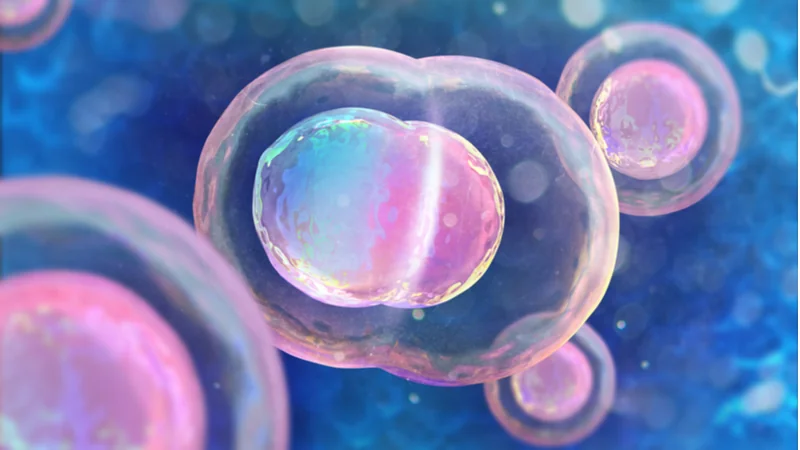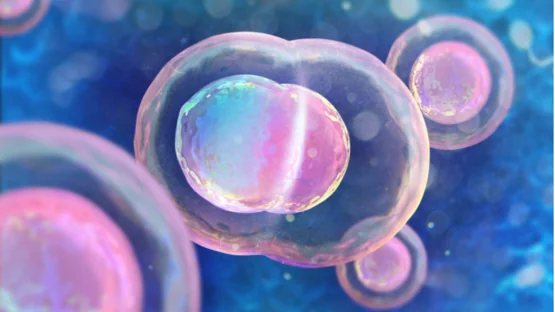Researchers publishing in Cell Stem Cell have found that the mitochondrial protein OPA1 is an integral, regulatory part of muscle stem cell activation, the process by which muscle stem cells proliferate and become active muscle tissue (myogenesis) [1].
Another piece of the puzzle
We have recently reported on the effects of mitochondrial fusion and fission on muscle stem cell proliferation. This paper looks at the same issue in a different way, focusing on a different protein and a different link in the chain.
Here, the researchers begin with a discussion of the quiescent state of stem cells. Stem cells are not always active; in order to preserve function and longevity, they stay quiescent, saving energy and preserving longevity until they are called upon to divide [2]. The ability of these cells to wake up from this state, divide rapidly, and replenish themselves is central to maintenance and regeneration after injuries [3].
Progressing through the stages with OPA1
Muscle stem cells can be categorized into four states: quiescent, activated (measured by Pax7), committed (measured by MyoD), and differentiating (measured by MyoD and MyoG). During activation, mitochondria quickly fragment, substantially decreasinglength and volume; in the later stages, they regain their size.
However, this only applies in the presence of OPA1. Mice engineered not to express the OPA1 protein have much smaller mitochondria in their muscle stem cells than their wild-type counterparts, and these mitochondria do not follow the normal curve. While their Pax7+ stem cell quantity, before injury, was only slightly less than that of wild-type mice, the wild-type mice greatly increased their Pax7+ stem cell numbers 21 days after injury while the OPA1-knockout mice sustained a decrease, showing enormously impaired muscle regeneration.
These cells’ gene expression was found to match their behavior; genes related to the cellular cycle, myogenesis, proliferation, and chromosomal division were strongly, and seemingly directly, affected by OPA1.
Interestingly, these mice also suffered a loss of Pax7 cells in uninjured limbs as well. Four days after an injury in one limb, the OPA1-knockout mice had far more MyoD and MyoG cells in an uninjured limb than wild-type mice did, showing the propensity of these cells to commit to differentiation without being able to replenish themselves. The researchers hold that these cells, before injury, are behaving in a G-alert state halfway between deep quiescence (G0) and activation (G1).
The researchers also found the inverse to be true: during activation (two days after injury), normal, wild-type cells express much less OPA1 than their fully quiescent counterparts.
The role of mitochondrial division
The researchers then tested to see if directly interfering with mitochondrial division would affect stem cell fate. Dosing cells with the mitochondrial fission inhibitor Mdivi-1 steered those cells towards quiescence and self-renewal. Interestingly, this approach seemed to neutralize the OPA1 knockout in multiple respects, including reducing MyoD and MyoG, bringing cells of this type more in line with their wild-type counterparts.
This paper also identified the molecules involved in the natural mitochondrial shift upon injury. Specifically, hepatocyte growth factor activator (HGFA) is released after an injury, stimulating cells along a pathway that uses mTORC1 to induce the G-alert state. As would be expected, introducing active HGF or HGFA promotes entry into this cell cycle, while rapamycin, which impedes mTORC1, discourages it.
Redox signaling was also found to be involved. OPA1-knockout muscle stem cells had slightly but significantly higher reactive oxygen species (ROS) than controls, along with reduced regulation. Glutathione, which has already been shown to be linked to OPA1 [4], was upregulated in the OPA1-knockout cells. The anti-ROS compound mitoTEMPO caused the stem cells of OPA1-knockout mice to behave more like their wild-type counterparts.
A connection to aging
The researchers also took a look at the gene expression of aged mice, finding that OPA1-related genes, glutathione-related genes, and genes governing mitochondrial function were downregulated with aging. Mice that were engineered to overexpress OPA1 were, at older ages, more inclined to retain stem cell quiescence and replenishment than wild-type mice, suggesting that a gradual loss of OPA1 plays a role in age-related muscle decline.
Conclusion
This in-depth research shows a complicated, intertwined relationship between multiple aspects of mitochondrial function and stem cell activity. It also shows the impact of the mTORC1 pathway and its influence on this aspect of aging. While it is far too early to determine if directly targeting OPA1 can be effective as a therapy in human beings, or if rapamycin and/or rapalogs are a more effective solution, this research is a fundamental stepping stone to research in that direction.
Literature
[1] Baker, N., Wade, S., Triolo, M., Girgis, J., Chwastek, D., Larrigan, S., … & Khacho, M. (2022). The mitochondrial protein OPA1 regulates the quiescent state of adult muscle stem cells. Cell Stem Cell.
[2] Cho, I. J., Lui, P. P., Obajdin, J., Riccio, F., Stroukov, W., Willis, T. L., … & Watt, F. M. (2019). Mechanisms, hallmarks, and implications of stem cell quiescence. Stem cell reports, 12(6), 1190-1200.
[3] van Velthoven, C. T., & Rando, T. A. (2019). Stem cell quiescence: dynamism, restraint, and cellular idling. Cell stem cell, 24(2), 213-225.
[4] Patten, D. A., McGuirk, S., Anilkumar, U., Antoun, G., Gandhi, K., Parmar, G., … & Harper, M. E. (2021). Altered mitochondrial fusion drives defensive glutathione synthesis in cells able to switch to glycolytic ATP production. Biochimica et Biophysica Acta (BBA)-Molecular Cell Research, 1868(1), 118854.




